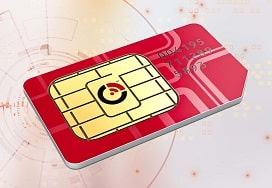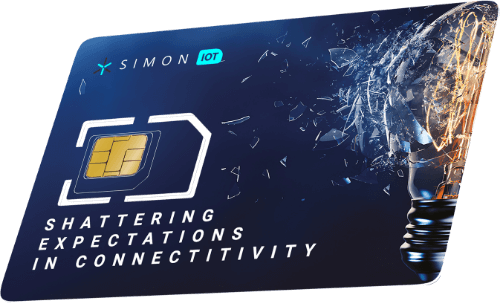Iot Sim Card Guide IoT Industrial Business SIM Cards
In the ever-evolving panorama of the Internet of Things (IoT), connectivity options play a critical role in determining the success and scalability of varied purposes. Among the key contenders are Wi-Fi and Low Power Wide Area Networks (LPWAN), every providing distinct benefits and challenges. Understanding their variations is crucial for these trying to deploy IoT options successfully.
Wi-Fi know-how, acquainted to most shoppers, provides high-speed internet access across a wide range of devices. Its infrastructure is widespread, allowing for quick deployment in houses, workplaces, and public areas. With the proper setup, Wi-Fi can supply high knowledge rates, making it suitable for applications requiring real-time data transmission, such as video streaming or intensive information logging.
Despite its advantages, Wi-Fi comes with limitations that may impression IoT options. It usually operates within a restricted vary, sometimes around a couple of hundred feet, relying on environmental components. This short-range functionality is in all probability not sufficient for applications requiring intensive protection, notably in rural or industrial settings. The dense networks of connected gadgets also can lead to congestion, affecting reliability and efficiency.
Sim Card Iot Ruggedized IoT SIM eSIM
LPWAN, on the other hand, was designed particularly for IoT purposes requiring long-range connectivity. Technologies like LoRaWAN, Sigfox, and NB-IoT fall beneath this category, providing sturdy options for low-bandwidth but high-volume data transmission over huge distances. LPWAN gadgets can transmit knowledge over a number of kilometers, making them perfect for smart agriculture, environmental monitoring, and asset monitoring.
Another crucial feature of LPWAN is its low energy consumption. Devices can typically run for years on small batteries, making them particularly appropriate for functions where frequent battery replacement is impractical. Iot Gsm Sim Card. This capability permits for distant installations in challenging environments, where regular maintenance could be pricey or time-consuming.

Wi-Fi requires consistent energy ranges and sometimes needs frequent energy supply, which is usually a hindrance in sure IoT applications. For instance, smart meters or distant sensors that have to be deployed in hard-to-reach areas struggle when tied to conventional power sources. LPWAN provides a breakthrough by allowing long-duration knowledge transmission with minimal energy necessities.
What Are Iot Sim Card SIM Starter Kit
The nature of knowledge transfer is another space where Wi-Fi and LPWAN diverge. Wi-Fi helps high-bandwidth applications, enabling the transfer of large quantities of data swiftly. Streaming movies or transferring massive information turns into much more feasible, which is important in certain sectors. However, this functionality can result in increased prices and complexities in community management.
Conversely, LPWAN focuses on sending small packets of information at infrequent intervals, fitting completely for monitoring eventualities. Sensor readings, status updates, and alerts could be pushed periodically with out the overhead related to high-bandwidth systems. This simplicity not solely improves battery life but additionally reduces overall operational prices.
Telkomsel Iot Sim Card IoT SIM Card eSIM Global Connectivity

Security is all the time a key concern in IoT deployments. Wi-Fi networks, while usually geared up with robust safety protocols, are still weak to intrusion and unauthorized entry. The reliance on established network infrastructures means they usually become targets for malicious activities.
LPWAN supplies a more closed network, typically designed particularly for IoT applications, which inherently will increase safety against external threats. With decrease visibility to the general public internet, these networks can safeguard important information with heightened protocols. Nonetheless, the specific security measures depend on the chosen LPWAN know-how and the Web Site way the system is architected.
Telkomsel Iot Sim Card IoT SIM card
Deployment costs also play a major role in deciding between Wi-Fi and LPWAN. Setting up a Wi-Fi network can contain appreciable expenses related to the set up of routers and repeating gadgets, especially for in depth protection areas. On the opposite, LPWAN solutions often require decrease preliminary investments, primarily because of fewer infrastructure dependencies and less hardware.
Choosing the best connectivity methodology in the end is dependent upon the precise requirements of the applying. If the use case calls for high data rates and real-time communication, Wi-Fi could also be most well-liked regardless of its challenges. For scenarios demanding long-range coverage and low energy consumption, LPWAN is likely the better choice.
In crafting IoT options, decision-makers should additionally account for scalability. As the number of units grows, the community must have the ability to handle increased visitors. Wi-Fi networks can turn out to be saturated rapidly, particularly in crowded settings, resulting in unreliable connections. LPWAN, with its capacity to assist 1000's of low-power gadgets throughout massive areas, usually demonstrates higher scalability.
Exploring hybrid approaches can offer a comprehensive solution for many applications. For instance, a project might profit from Wi-Fi for particular duties requiring excessive information throughput, whereas utilizing LPWAN for units needing long-range and low-power operation. This combination leverages the unique strengths of both technologies while mitigating their weaknesses.
Iot Sim Card Secure IoT SIM
The way ahead for IoT connectivity likely lies in a extra built-in method, the place a quantity of technologies coexist to serve varied wants. The speedy innovation inside both Wi-Fi and LPWAN standards suggests a promising evolution more helpful hints in capabilities. Ongoing advancements in security measures, energy efficiency, and cost-effectiveness will continue to shape how organizations undertake connectivity options.
In abstract, Wi-Fi and LPWAN characterize two distinct however very important paradigms in the realm of IoT connectivity. The selection between the 2 hinges on particular use-case scenarios, including vary, energy requirements, data needs, and security issues. Organizations must carefully evaluate these parameters to make knowledgeable decisions that align with their operational objectives. Understanding the nuances of both technologies will information companies towards efficiently deploying IoT solutions tailored to their unique demands.
- Wi-Fi offers excessive knowledge transfer rates appropriate for applications requiring massive bandwidth, while LPWAN excels in situations needing low data throughput with long-range connectivity.
- The deployment of Wi-Fi ensures easy accessibility in city areas, however LPWAN is designed to achieve remote and rural areas the place cellular infrastructure could also be lacking.
- Wi-Fi networks generally require extra energy consumption due to continuous connection calls for, whereas LPWAN gadgets prioritize battery life, often operating for years on a single cost.
- Security protocols differ, with Wi-Fi networks vulnerable to unauthorized access if not properly secured, whereas LPWAN technologies usually use built-in encryption mechanisms that enhance information security.
- Wi-Fi networks typically assist a limited variety of linked gadgets simultaneously, whereas LPWAN can accommodate a vast variety of devices inside a single community with out congestion points.
- The latency in Wi-Fi is minimal, allowing for real-time knowledge transmission, while LPWAN may expertise higher latency, appropriate for non-time-sensitive functions.
- Wi-Fi infrastructure can require frequent maintenance and upgrades, while LPWAN networks are often less complicated to manage over lengthy periods because of fewer components and decrease complexity.
- Interference from neighboring Wi-Fi signals can have an effect on connectivity, while LPWAN operates in much less congested frequency bands, enhancing reliability for IoT functions.
- Wi-Fi is usually seen as an indoor connectivity solution ideal for smart homes and workplaces, whereas LPWAN is better suited for outside purposes corresponding to smart agriculture and environmental monitoring.
- Cost implications range; setting up Wi-Fi networks can be expensive as a outcome of hardware wants, whereas LPWAN could provide a more economical and scalable solution for large-scale IoT deployments.undefinedWhat is the main difference between Wi-Fi and LPWAN for IoT connectivity?
Wi-Fi provides high-speed knowledge transmission over brief distances, making it best for purposes needing excessive bandwidth. In distinction, LPWAN is designed for long-range communication with low energy consumption, finest suited to gadgets that require rare data transmission.
M2m Iot Sim Card IoT SIM Card Connectivity
Which use circumstances are better fitted to Wi-Fi in IoT applications?
Wi-Fi is optimal for urban settings the place units need continuous internet access, such as smart home appliances, video surveillance, and high-bandwidth sensors that operate within short to medium ranges.
What are the important thing advantages of utilizing LPWAN for IoT connectivity?
LPWAN excels in extensive protection, low energy consumption, and cost-effectiveness for big deployments. It's particularly advantageous for distant monitoring functions like smart agriculture, utility meters, and environmental sensors.
Iot Gsm Sim Card IoT Connectivity Resources Single SIM Card
How does the energy consumption of Wi-Fi examine to LPWAN?
Wi-Fi sometimes consumes more energy, especially during continuous knowledge transmission, whereas LPWAN networks are designed for units that send small amounts of data occasionally, leading to considerably decrease energy requirements.
Cellular Iot Sim Card eSIM 101 Introduction eSIM IoT
Can Wi-Fi and LPWAN coexist in an IoT environment?
Yes, combining Wi-Fi and LPWAN can be useful. Wi-Fi can deal with high-bandwidth duties whereas LPWAN manages low-power, long-range communications, permitting for a versatile and environment friendly IoT ecosystem. Iot Device With Sim Card.
What are the security implications of using Wi-Fi vs. LPWAN?
Global Nb-Iot Sim Card SIM Cards for IoT
Wi-Fi implementations often have stronger, standardized safety protocols however could be more susceptible to unauthorized access in congested areas. LPWAN safety can range however typically offers lowered attack surfaces as a result of less complicated communication.
Which expertise helps a larger number of gadgets in a given area?
LPWAN helps a larger number of gadgets as a outcome of its low-power, low-bandwidth architecture that can handle connections over huge distances. Wi-Fi, while capable of dealing with multiple connections, may struggle in densely populated environments due to bandwidth limitations.
How does the deployment value of Wi-Fi examine to LPWAN?
Telkomsel Iot Sim Card IoT SIM cards
Wi-Fi could have greater initial deployment costs because of infrastructure necessities similar to routers and access factors. LPWAN typically involves decrease setup prices, notably when leveraging existing networks or decentralized architectures.

What should I think about when choosing between Wi-Fi and LPWAN for my IoT project?
Consider the precise requirements of your application: required range, energy consumption, information transmission frequency, and bandwidth wants (Iot Data Sim Card). Each expertise has its strengths; aligning your selection with these parameters will improve general efficiency.